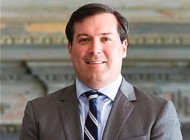After 11 years as director of clocks, watches and scientific instruments at Skinner Inc, expert Robert C. Cheney has returned to the field he helped cultivate over several decades. A foremost authority on American clocks, in particular those made by the Willard family, Cheney is a third-generation clockmaker, restorer, dealer and co-author of Clock Making in New England, 1725-1825: An Interpretation of the Old Sturbridge Village Collection with Philip Zea. A familiar face on the PBS series Antiques Roadshow, Cheney, a Fellow in the National Association of Watch and Clock Collectors, lectures widely and has advised dozen of institutions. He recently joined the speciality auctioneer R.O. Schmitt as a consultant.
What are you working on these days?
I’ve always been busy. That’s not going to change. I’m on the board of the Willard House and Clock Museum in Grafton, Mass. I’ll be spending time there, cataloging the clock collection and taking new photographs. Our objective is to make the collection available online. I also plan to continue dealing in clocks on a select basis and work as a consultant. I want to do a lot more writing. Now, hopefully, I’ll have time.
What can you tell us about the Willard House and Clock Museum?
We have interesting things other than clocks, such as one of the two known portraits of Simon Willard, portraits of other family members and Willard family heirlooms. There are more than 80 clocks, with examples made by each of the three generations of Willard clockmakers, starting in 1766 and continuing through 1870. The collection is housed in a house built in 1718. Part of the museum’s mission is to interpret life in central Massachusetts from 1750 to 1825. Clocks are displayed in period rooms, furnished with Colonial, Federal and Empire furniture and appropriate accessories.
What are your favorite clocks?
Some of the simple Willard clocks that were made in Grafton. These are 30-hour wall clocks, sometimes called one-day clocks. They have simple mechanisms and just mark the hours with a single bell. I used to collect them, but am not actively collecting now.
What do you make of the current market?
We’re recovering from the disaster of the last decade, but I’m not sure that we’ll ever see those prices again. There are plenty of collectors out there and, like other aspects of the business, the high end of the market is strong. Howard clocks and those made by the Willard family do well. Today’s collectors are buying what they like and can feel good about owning. Some of the clocks that would appeal only to sophisticated buyers are soft. Tall case clocks are good buys today. The market for fine watches is strong. They don’t take up much space. A positive sign is that we’re seeing new collectors entering the market. I’m confident the market for clocks and watches will continue to improve.
Do you have a favorite story from Antiques Roadshow?
I do, but it’s about a great item that never made it to television. One of the Roadshow guidelines is that people bringing things in can’t be taped for television more than once and that’s what kept this piece off the air. About six years ago, a guy with a good story brought in a small packet that included a very rare equinoctial dial. It’s somewhat similar to a sundial, but it’s used for measuring latitude. He said it had belonged to William Penn, who brought it with him when he arrived here in 1682 and he gave it to a friend. That’s a nice story, but you have to wonder. But the dial was marked by a Seventeenth Century instrument maker and the guy also had a group of Seventeenth and Eighteenth Century documents that fully backed up his claims. It was an incredible piece, the sort the Smithsonian or any other major museum would love to have. The longer I looked at it, the more I thought it was worth. I eventually said that I thought it was worth about $50,000, but at the right auction could bring far more. I wish we could have gotten the piece onto the program.
-Rick Russack






